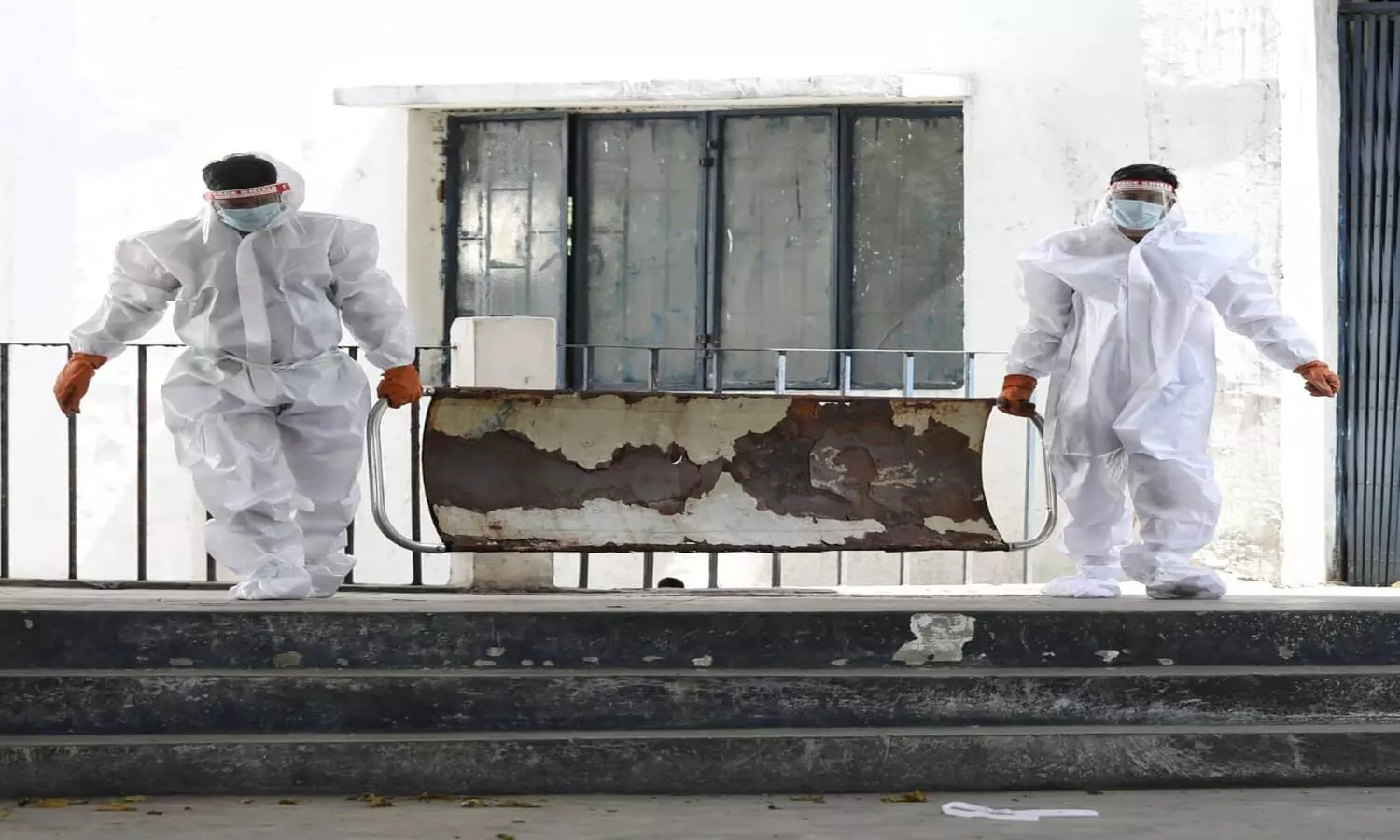#DataViz: 'Covid-19 Deaths in India Could Be 6 Times Above Officially Recorded Deaths'
A recent study estimates that more than 85% of deaths due to Covid-19 in the first and second waves of the pandemic in India might have gone unrecorded

Mumbai: Six to seven times more people could have died of Covid-19 in the first and second waves of the pandemic than officially reported in India, finds a study published in the journal Science on January 7, 2022.
As many as 3.2 million could have died from the disease, estimated the study, versus the government-recorded number of 419,000 deaths between June 2020 and July 2021.
The study, by authors from the Centre for Global Health Research, the Indian Institute of Management at Ahmedabad, the Center For Voting Opinions and Trends in Election Research (CVoter), Development Data Lab and Dartmouth College, uses multiple sources, including estimations of excess mortality based on death registrations and a telephonic household survey. The study also cited an IndiaSpend story on the rampant undercounting of Covid-19 deaths in India.
"India's reported COVID death totals are widely believed to be under-reports," the authors wrote in the study, "because of incomplete certification of COVID deaths and misattribution to chronic diseases and because most deaths occur in rural areas, often without medical attention".
The authors also used the findings of several journalists and non-governmental organisations, and mortality data from the government's Civil Registration System (CRS) and Health Management Information System (HMIS).
The estimate of 3.2 million deaths imply that 2,300 to 2,500 people per million died from Covid-19 in India by July 31, 2021, the study says. This would make India one of 15 countries with the highest Covid-19 death rate, based on data from Our World in Data, as of July 31, 2021. India ranks 105 of 201 countries, based on government-reported deaths, as of July 31, 2021.
Nearly 6% households reported Covid-19 deaths during second wave
Using the CVoter survey, the study estimates that at peak deaths during the second wave, nearly 6% of households reported a Covid-19 death, while 1.9% of households reported a Covid-19 death at the peak of deaths in the first wave.
Of the 3.2 million overall deaths due to Covid-19, 2.7 million deaths occurred between April 2021 and July 2021, when the second wave swept across the country.
120% increase in mortality in April-May 2021 compared to pre-pandemic years
Between July 2020 and May 2021, deaths because of any cause increased 27% over 2018 and 19, based on the HMIS, which covers 200,000 health facilities, 90% of them in rural areas. Most of the deaths were during the second wave in April-May 2021, increasing by 120% over the same period in 2018 and 2019.
In the first viral wave, deaths recorded by the HMIS were predominantly in urban areas, but deaths in the second wave affected both urban and rural facilities, the study noted.
Compared to 2018 and 2019, the increase in all-cause deaths in April-May 2021 varied across states, with Gujarat reporting a 230% increase and Kerala a 37% increase.
Gap between official and estimated numbers vary across states
The study also used data on deaths from the CRS for 10 states that had 10 or more months of data. The latest CRS report is for 2019 and 2020. Data from 2021 are not available publicly because of which the authors of the study collected this data from journalists and NGOs that received these data through India's Right to Information Act or through administrative requests, the study said.
In the states for which the study analysed data, the recorded mortality in the 10-12 month period from July 2020 was 26% higher than the average of deaths in 2018 and 2019.
Need better data on deaths, Covid-19 and otherwise, in India
The Indian government could gather more data on Covid-19 deaths from its Sample Registration System, which is a continuous demographic study covering about 1% of the population, said Prabhat Jha, the lead author of the study, in this video explainer, on January 12, 2021. The last available mortality data for SRS are from 2019. "But given the importance of Covid, a simple solution also would be to add to the 2022 census a question on houses having any death in 2020 or 2021 and if so, the age, sex and date of such deaths."
We welcome feedback. Please write to respond@indiaspend.org. We reserve the right to edit responses for language and grammar.


